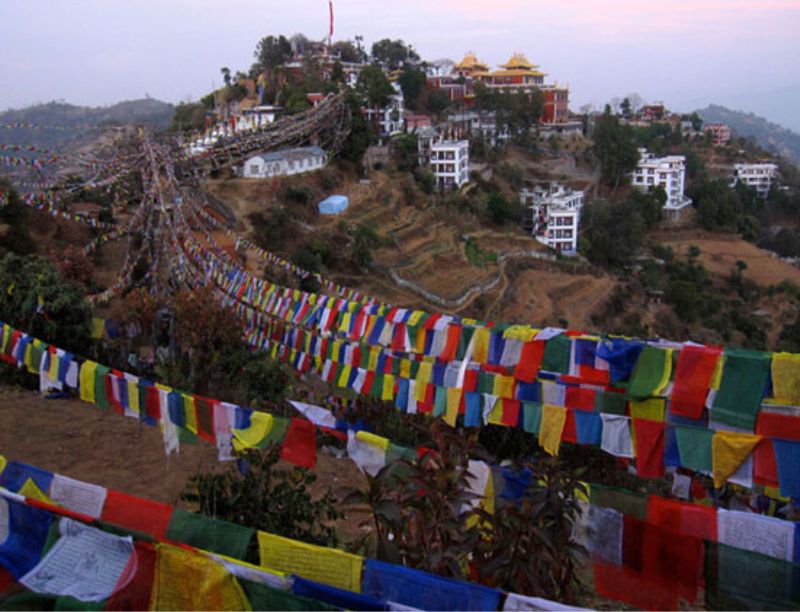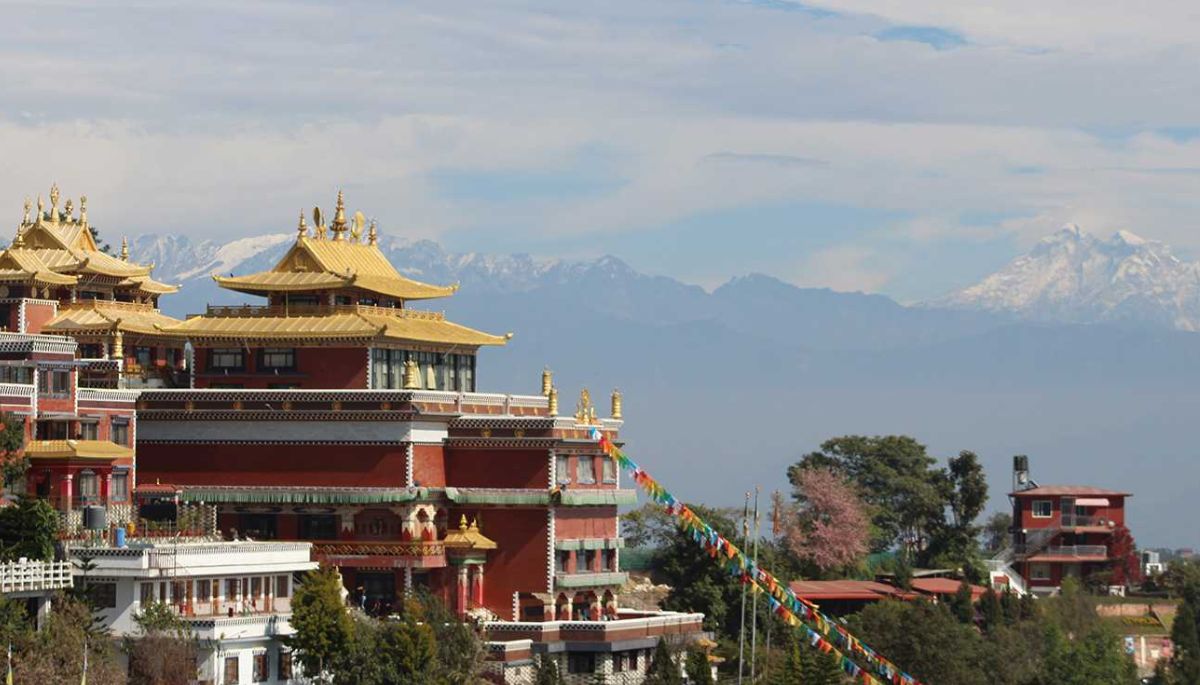Introduction
Nestled in the picturesque hills of Nepal, Namo Buddha is a revered Buddhist pilgrimage site and a hidden gem for hikers. Located 42 kilometers southeast of Kathmandu, this sacred destination offers a perfect blend of spirituality, culture, and natural beauty. The Namo Buddha hike from Kathmandu is a journey through lush forests and terraced fields and a spiritual voyage connecting you with ancient legends and serene monasteries.
Namo Buddha is steeped in myth and legend, one of the most prominent stories being that of the compassionate prince Mahasattva. According to Buddhist lore, the prince encountered a starving tigress and her cubs during his travels. Moved by their plight, he sacrificed his body to save them, an act of ultimate compassion. This selfless deed is said to have occurred at the site of Namo Buddha, making it a place of great reverence and spiritual significance.
Also Read: Ranikot Hike from Bhaktapur: Scenic Adventure Guide
Starting the Journey: Kathmandu to Dhulikhel
The journey to Namo Buddha typically begins in Kathmandu, the bustling capital of Nepal. To start your hike, you first must travel to Dhulikhel, a charming town about 30 kilometers southeast of Kathmandu. Dhulikhel is known for its panoramic views of the Himalayas and is a popular starting point for several treks.
You can reach Dhulikhel by taking a bus or hiring a private vehicle. The drive is an experience, offering glimpses of rural life and beautiful landscapes. Upon reaching Dhulikhel, you’ll find several guesthouses and hotels where you can rest and prepare for the hike.
The Hike from Dhulikhel to Namo Buddha
The hike from Dhulikhel to Namo Buddha is approximately 14 kilometers and takes about 4 to 5 hours, depending on your pace. The well-marked track is appropriate for hikers of all moderate fitness levels. Here’s a breakdown of the critical segments of the hike:
Dhulikhel to Kavre Bhanjyang
The first leg of the hike takes you from Dhulikhel to Kavre Bhanjyang, a small village situated on a ridge. The trail slowly climbs through terraced fields and traditional Newari villages. As you walk, you’ll be treated to stunning views of the surrounding hills and, on clear days, the distant Himalayan peaks.
Kavre Bhanjyang is an excellent spot to take a short break, enjoy local snacks, and interact with the friendly villagers. With its quaint houses and vibrant culture, the community provides an insight into the area’s customary way of life.
Kavre Bhanjyang to Kali Mandir
From Kavre Bhanjyang, the trail continues uphill towards Kali Mandir, a small Hindu temple dedicated to the goddess Kali. This section of the hike is more challenging, with steeper ascents and narrow paths. Nonetheless, the tranquil ambiance of the forest and magnificent views make the effort worthwhile.
The Kali Mandir area is a peaceful spot to rest and catch your breath. The temple is modest but significant for the local Hindu community. The surrounding forest is home to various bird species, making it a haven for birdwatchers.
Kali Mandir to Namo Buddha
The trail’s last section leads you to Kali Mandir and Namo Buddha. This section is more straightforward, with a gentle descent through pine forests and open fields. As you approach Namo Buddha, you’ll notice the striking white stupa that marks the site of the prince’s sacrifice.
Upon reaching Namo Buddha, you’ll be greeted by the tranquil ambiance and the stunning views of the surrounding hills and valleys. The site is home to several monasteries, including the Thrangu Tashi Yangtse Monastery, where monks reside and practice daily rituals. The main stupa, adorned with colorful prayer flags, stands as a symbol of peace and compassion.
Exploring Namo Buddha
Namo Buddha offers a range of activities and experiences for visitors. Here are some highlights:

Thrangu Tashi Yangtse Monastery
The Thrangu Tashi Yangtse Monastery is one of the main attractions at Namo Buddha. This beautiful monastery is an important center for Buddhist learning and meditation. Visitors can explore the monastery grounds, observe the monks’ daily routines, and even participate in meditation sessions.
The monastery’s architecture blends traditional and modern styles. Its intricate murals and statues depict various aspects of Buddhist teachings. The calm surroundings offer the ideal conditions for introspection and spiritual renewal.
The Stupa and Sacred Site
The main stupa at Namo Buddha is a significant pilgrimage site for Buddhists. It is believed to house relics of the compassionate prince and is adorned with prayer flags and offerings from devotees. The stupa area is an ideal place to sit quietly, meditate, and soak in the spiritual energy of the site.
Nearby, you’ll find a small shrine with a prince statue offering his body to the tigress. This poignant depiction reminds you of the values of compassion and selflessness.
Hiking and Nature Walks
For those who enjoy nature walks, Namo Buddha offers several trails that lead through forests, fields, and quaint villages. These trails allow one to explore the local flora and fauna, interact with the villagers, and experience the area’s rural charm.
One popular route is the hike to Panauti, a historic town known for its ancient temples and rich cultural heritage. The trail takes you through scenic landscaping, providing an overview of the Newari community’s customary way of life.
Practical Information for Hikers
Before embarking on the Namo Buddha hike, to guarantee a secure and pleasurable travel, consider these helpful suggestions:
Best Time to Visit
The best time to hike to Namo Buddha is during the spring (March to May) and autumn (September to November) seasons. The weather during these periods is pleasant, with clear skies and moderate temperatures. The monsoon season (June to August) brings heavy rains, making the trails slippery and challenging.
What to Pack
Pack light, but ensure you have essentials such as comfortable hiking shoes, layered clothing, a hat, sunscreen, a reusable water bottle, and snacks. A basic first aid kit and a map or GPS device are also recommended.
Accommodation and Food
While Dhulikhel offers a range of accommodation options, Namo Buddha has a few guesthouses and lodges for overnight stays. These simple accommodations provide a comfortable place to rest after a long hike. Most guesthouses serve traditional Nepali meals, which are delicious and nutritious.
Respect Local Customs
Namo Buddha is a sacred site, so respecting local customs and traditions is essential. Dress modestly, especially when visiting monasteries and religious sites. Always ask for permission before taking photographs of people or religious objects.
Conclusion
The Namo Buddha hike from Kathmandu combines physical adventure with spiritual enrichment. You’ll connect deeply with nature and spirituality as you traverse scenic landscapes and immerse yourself in the region’s legends and culture. Whether you’re a seasoned hiker or a casual traveler, this hike offers a unique and memorable experience that will leave you with lasting memories of Nepal’s beauty and serenity.
Read More: Exploring the Sundarijal to Chisapani Hike: A Journey Through Nepal’s Natural Beauty


0 Comment